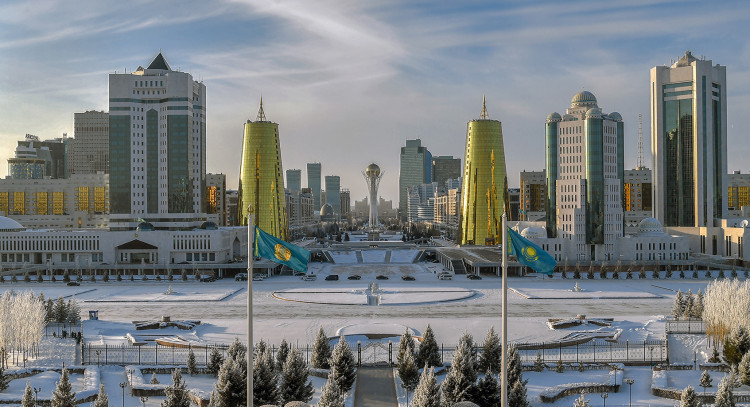ASTANA – The guaranteed transfer from the National Fund of Kazakhstan to the country’s budget will reach 2.2 trillion tenge (US$4.7 billion) in 2023 and is set to decline moving forward, according to a law signed by President Kassym-Jomart Tokayev on Nov. 24.

The Kazakh Ministry of National Economy proposed in April to increase the guaranteed transfer by 1.6 billion tenge ($3.4 million) to implement the tasks set by the President to the government and ensure a balanced national budget. Photo credit: Akorda.kz
The transfer will make two trillion tenge ($4.3 billion) in 2024 and 1.9 trillion tenge ($4 billion) in 2025. The law indicates the funds are meant to “ensure social and infrastructural development.”
Presenting the bill on transfers in the Mazhilis, a lower chamber of the Kazakh Parliament, in October, Minister of National Economy Alibek Kuantyrov said the draft law was developed taking into account the new requirements of the Budget Code.
“The volumes of the guaranteed transfer from the National Fund are limited by the new budget rule. They are determined, taking into account the cut-off price for oil and are not expected to exceed the amount of direct taxes received by the National Fund from oil sector organizations. Thus, the bill sets the oil cut-off price at $48.9 per barrel in 2023 and $42.2-40.3 per barrel in 2024-2025,” said the minister.
The new rules, according to Kuantyrov, will contribute to the recovery of the National Fund assets in 2023 to $66.7 billion, with a further increase to $78.8 billion in 2024 and $93.2 billion in 2025.
“According to our forecasts, setting a cap on withdrawals from the National Fund and the growth rate of spending in the medium term will improve fiscal discipline and strengthen the savings function of the National Fund,” he said.
Created in 2000, the National Fund is a governmental entity modeled on Norway’s Oil Fund to accumulate a share of the nation’s profits from oil exports. It is designed to perform two functions.
One is a stabilization function: to stabilize fiscal spending across economic cycles and reduce volatility from oil revenue inflows. The second function is to address inter-generational equity from the oil windfall.
Guaranteed transfers along with targeted transfers are part of the stabilization function. The national budget receives guaranteed transfers annually to cover its deficit, while the targeted transfers are discretionary, can be used to fund specific fiscal initiatives, and can only be allocated by the decision of the President.
The funds, which reached $52.3 billion as of October, are accumulated primarily from the country’s massive oil sector tax revenues. While fluctuating significantly during the financial crisis of 2008, the funds have increased substantially from just $660 million as of January 2001, according to the data from the National Bank that is in charge of the fund’s asset management.
Kazakhstan regularly taps the fund to support its budget. President Tokayev, however, reiterated on multiple occasions the need to reduce the reliance of the country’s budget on the fund.
“Transfers from the National Fund reached 4.8 trillion tenge ($10.3 billion) in 2020 and 4.5 trillion tenge ($9.6 billion) in 2021. The government requested another 4.6 trillion tenge ($9.9 billion). These are very large funds. The national budget should not rely on the use of the National Fund. Transfers should be gradually reduced,” said Tokayev during his meeting with the National Bank’s top executives in May.
The historically high transfer in 2020 was in response to the COVID-19 pandemic and plummeting global oil prices.
The fund revenues, however, also declined in 2020 due to Kazakhstan’s commitment as part of the OPEC+ agreement to cut oil production. The fund assets have decreased from $61.1 billion as of January 2020 to $57.7 billion as of January 2021.

